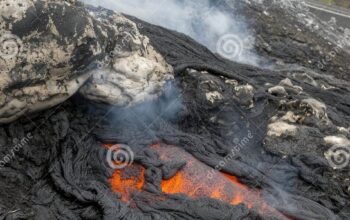The phenomenon of urban heat islands (UHIs) has garnered significant attention among climatologists, meteorologists, and urban planners alike. This phenomenon, characterized by urban areas exhibiting elevated temperatures compared to their rural surroundings, has potent implications for meteorological patterns, particularly the formation and intensification of hurricanes. A pressing inquiry emerges: are cities luring hurricanes? The dynamics between urban landscapes and extreme weather events reveal a complex interplay that necessitates an in-depth exploration.
Urban environments, with their concrete jungles and myriad functionalities, affect local and regional climates in multifarious ways. At the heart of this discussion lies the concept of thermal energy absorption. Urban landscapes, constituted predominantly of asphalt, concrete, and buildings, absorb significant amounts of solar radiation during the day. This heat is subsequently released into the atmosphere, creating a localized heat dome. Consequently, the phenomenon not only alters the microclimate but also plays a pivotal role in shaping larger climatic trends.
The implications of UHIs extend beyond mere temperature elevation; they may indeed serve as veritable storm magnets. Elevated sea surface temperatures are a well-documented precursor to hurricane development. However, the intricate feedback loop between urban heat emissions and atmospheric conditions contributes to the convection patterns that are vital for storm formation. When intense heat is released into the atmosphere through urban areas, it can enhance the convective activity that fuels storm systems, potentially leading to an increased frequency of hurricane-prone conditions.
To understand the mechanics of how urban areas could be influencing hurricane patterns, it is essential to delve into the atmospheric dynamics that govern storm development. Typically, hurricanes require a combination of warm ocean waters, moist air, and low vertical wind shear to develop and maintain their structure. As cities expand and generate more heat, the altered atmospheric conditions can optimize these necessary elements. For instance, as heat rises, it causes air to circulate in such a manner that potentially exacerbates the conditions needed for hurricanes to form.
This interaction becomes particularly evident when scrutinizing coastal megacities that reside in hurricane-prone regions. Cities like Miami, Houston, and New Orleans are inherently vulnerable to the threats posed by hurricanes. However, their urban configurations exacerbated by climate change lead to significant increases in temperature and fluctuating weather patterns. As global warming escalates, so does the ocean’s surface temperature, creating a feedback loop where urban heat contributes to enhanced storm intensity.
The urban heat island effect also alters precipitation patterns. One distinguished phenomenon is the trend towards intensified rainfall events—another contributor to hurricane severity. Urban areas tend to alter hydrological cycles; they influence local moisture levels and precipitation efficiency. As rising temperatures increase evaporation, a larger vapour reservoir could lead to increased rainfall, further bolstering storm systems that make landfall.
In light of these dynamics, cities must reconsider their designs and growth strategies to mitigate the impacts of urban heat islands. Traditional urban planning methods often overlook the intricate relationship between land usage and climatic effects. Incorporating green infrastructure, such as parks, green roofs, and permeable pavements, not only serves to lower urban temperatures but could also diminish the convective forces driving storm systems. This approach presents a dual benefit: it reduces the UHI effect and can serve as a buffer against extreme weather events.
Moreover, illuminating the relationship between urbanization and hurricane activity necessitates a re-evaluation of emergency preparedness and response strategies. With the growing intensity and frequency of hurricanes, the need for adaptive measures becomes paramount. This includes implementing early warning systems that take into account urban heat dynamics when predicting storm trajectories and intensities. Cities must cultivate proactive engagement strategies that inform the public of the increasing risks associated with heightened urban temperatures.
The scientific community also has a crucial role in articulating the implications of these phenomena. Collaborative research efforts that fuse climatology, urban studies, and policy development could yield actionable insights that drive substantial change. By fostering interdisciplinary discourse, new frameworks for understanding and addressing the intricate connections between urban heat and hurricane activity can emerge.
In conclusion, the antecdents linking urbanization to hurricane attraction are compelling and merit serious contemplation. As cities proliferate and climate change persists, the consequences of urban heat islands may amplify their roles as storm magnets. The urgency of recalibrating our urban environments and preparedness strategies is paramount, as the evidence grows increasingly convincing. The responsibility lies with urban planners, scientists, and policymakers to converge on innovative solutions that not only preserve urban spaces but also shield them from the formidable impacts of hurricanes. Addressing these interrelated challenges will require a monumental shift in perspective, invoking a more holistic understanding of our cities’ influence on atmospheric phenomena.










